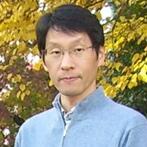Invited Speaker----Dr. Shuji Ogata

Professor, Nagoya Institute of Technology, Japan
Dr. Shuji Ogata, Doctor of Science (Ph.D.-physics), is a professor of department of physical science and engineering of graduate school of the Nagoya Institute of Technology in Japan since 2005. He got his B. Sc. in 1986 from the Univ. of Tokyo, M. Sc. in 1988 from the graduate school of physics of the Univ. of Tokyo, and D. Sc. in 1991 from the graduate school of physics of the Univ. of Tokyo. After two-year post doc. and assistant professor career of the Univ. of Tokyo, he became an associate professor of Yamaguchi Univ. in Japan in 1995. He was awarded: Best technical paper award in supercomputing 2001, Best presentation award of computation mechanics of Japan in 2010, J. Phys. Soc. Jpn. papers award of Editors’ choice in 2014. Excellent Achievement Research Project of High-Performance Computing Infrastructure of Japan in 2015. His current interests include developing and applying various large-scale atomistic simulation codes for various materials on supercomputers and their concurrent hybridization.
Speech Title: Large-scale hybrid quantum-classical simulation of metal-epoxy resin bonding in moisture environment
Abstract: Increasing industrial demand exists to bond dissimilar materials using epoxy resin for advanced manufacturing of various devices and systems as an automobile and its parts. One of the principal issues is to understand the interfacial bonding mechanisms between the epoxy resin and metal. Adhesion strength between metal and epoxy resin is well known to reduce significantly in a moist environment. The FTIR spectroscopy has shown that 15-30% of the original epoxide groups remain near the adherend in the resin. We therefore address [Ogata and Y. Takahashi, J. Phys. Chem. C 2016, 120, 13630] the issue from two directions by considering two models of resin: 100% of epoxide groups remain in the one model, while 0%, in the other model. In both models, we calculate the shear strength of the interfacial adhesion between the surface oxidized Al and bisphenol-A epoxy resin with a varying number of water molecules inserted in-between using the hybrid quantum-classical (QM-CL) simulation method. The QM region, which is treated by our order-N Real-space grid DFT [N. Ohba, S. Ogata et al., Comp. Phys. Commun. 2012, 183, 1664], is composed of one to two thousand atoms at the interface. Through the simulation runs, we find that the adhesion strength in the 100% model is an order of magnitude larger than that in the 0% model. Various chemical reactions are observed in both models. Details of them will be explained in the talk.



